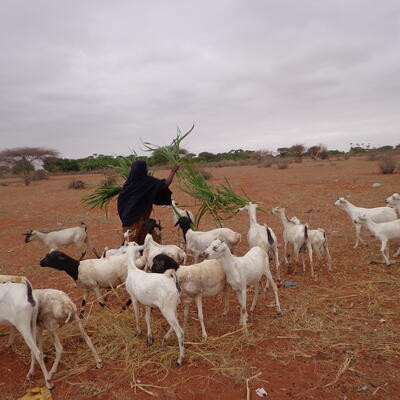
Restoration of Livestock Services in Conflict and Drought Affected areas of Ethiopia (RESTORE)
Impact (Overall Objective): Enhanced food security, nutrition and livelihood resilience for rural communities across the country, focussing on areas affected by drought and conflict.
Outcomes (Specific objectives): Sustained recovery of the livestock system from the conflict and drought induced crises, with increased overall sector productivity and improved the marketing of livestock products.
Target Primary and Secondary Beneficiaries
Livestock keeping households and value chain actors
Regional and woreda public animal health services
Private vets and feed producers
Consumers of livestock products
Main Results – Intermediate Outcomes
IO 1: Livestock service delivery systems restored in conflict and drought affected areas
IO 2: The quality and reliability of integrated public and private veterinary service delivery improved, with more efficient production
IO 3: Improved compliance and enforcement of animal health, food safety standards, responding to market requirements
IO 4: Availability and Quality of livestock feeds improved through farmers/pastoralists and private sector driven fodder production and marketing
IO 5: Enhanced quality of hide and skin through improved animal health intervention
Main activities / Outputs
WP1: Restore Livestock Service Delivery Systems
A1.1 Rapid assessment conducted to determine sustainable livestock levels, and livestock response plan, in close cooperation with the main institutions and cooperation partners supporting the livestock sector; including determining the status of feed, forage and pasture resources
A1.2 Restore routine and emergency animal health equipment, systems and inputs in regions except those three regions supported under the EU HEARD program (Amhara, Oromia and Somali)
A1.3 Equipment to restore livestock services in Amhara, Oromia and Somali regions
WP2: Improved vet services
A2.1 Strengthening the capacity of public institutions to control and regulate animal health
A2.2 Strengthening the quality of public and private veterinary services
A2.3 Investigate how improved livestock production efficiency can reduce livestock ecological and climate change impacts
A2.4 Continue to enhance the capacity of the animal health sector
WP3: Improved health and food safety standards
A3.1 Support for harmonization of legislation for sanitary inspection and certification procedures to meet international trade requirements
A3.2 Strengthening Ethiopian Veterinary Service capacity to address issues related to sanitary and phyto-sanitary and technical barriers to trade
A3.3 Capacitate domestic meat value chains to improve hygiene, inspection and certification
A3.4 Strengthen surveillance and control of priority zoonotic diseases
WP4: Improved fodder
A4.1 Promote development of feed and forage production banks and sustainable pastureland management with nutritious, and drought tolerant fodder grass promoting marketable livestock feed.
A4.2 Support manure management in each region
WP5: Improved hide and skin quality
A5.1 Conduct assessment with regions on existing skin and hide damaging diseases with recommendations for control
A5.2 Conduct stakeholders consultative workshop in regions with awareness creation on hide and skin quality issues, production and processing
A5.3 Provide Tot Training on the control of skin and hide damaging diseases in regions (including procurement and supply of chemicals, sprayers, PPE, etc), with possible PPP delivery, as part of a pilot of strategic control of relevant diseases and poor skin quality.



















